Top Reasons for Cart Abandonment – And What You Can Do About Them
Are you losing potential customers at the final hurdle? Sammy Fraser, Lead Digital Strategist at Swanky, is here to help. Read on to find out how you can overcome the top reasons for cart abandonment and unlock your ecommerce store’s sales potential.
Written By
Sammy Fraser

A recent study by Statista showed that in the first quarter of 2022, around 82% of mobile orders in the UK weren’t completed.1 On desktop, over the same time period, 7 out of 10 orders were abandoned at the checkout stage. That’s some serious revenue that ecommerce retailers are missing out on.
The pain of cart abandonment isn’t felt equally across all industries and products, though. Higher priced and larger, more involved purchases typically have a higher abandonment rate, with the automotive, airline and fashion industries all falling victim to the largest number of exits. Down at the other end of the scale, more impulsive, less emotive buys, such as groceries, electronics and cosmetics, usually see less friction and drop-off before the checkout stage.
With these stats in mind, how much revenue do you think you’re losing from abandoned checkouts alone?
Whilst a large portion of cart abandonments are simply a result of the way consumers tend to browse ecommerce sites (i.e without being ready to buy), and are therefore unavoidable, there are some reasons for abandonment that crop up again and again.
The good news is that there are some simple tactics you can employ on your online store to overcome these common barriers to purchase.
In this article, I’ll be highlighting some of the top reasons for cart abandonment, and explaining what you can do to start to resolve these pain points on your own ecommerce store – helping you turn more browsers into buyers. Throughout, I’ll be using examples from conversion rate optimisation (CRO) projects that Swanky’s Growth Accelerator team have worked on.
Common reasons for cart abandonment
#1 Unexpected fees
Presenting users with unexpected costs when they reach the checkout could have them making a hasty exit. In fact, Baymard Institute found that 48% of all reasons for cart abandonment were down to high hidden costs.2
Surprise shipping costs are a particularly big barrier to purchase, as are unforeseen tax fees. Not only are you risking users abandoning their order, but these are surefire ways to frustrate shoppers and tarnish your reputation.
The key to reducing abandonment behaviour is to clearly communicate information about shipping and transaction fees before the checkout, so that you’re setting consumers’ expectations in advance. For example:
- Try offering transparent shipping estimates on your product pages, to avoid any nasty surprises at checkout.
- Alternatively, you could include a delivery calculator, so that users can work out how much shipping to their location will cost ahead of reaching the checkout process.
- Include a clear and complete breakdown of shipping rates in a dedicated Shipping Policy that’s easily accessible from your footer menu.
- Consider including exact shipping costs on your cart page.
- Include a disclaimer on product and cart pages that all prices exclude taxes and that they’ll be calculated during checkout.
Case study: Loop Earplugs
Loop Earplugs offer free shipping when users purchase two or more Loop sets. Until recently, this offer wasn’t promoted very clearly in the lead up to the checkout. With no information about shipping communicated on the cart page, a high rate of users were abandoning their virtual baskets.
With this pain point in mind, we ran an A/B test to experiment with more prominent shipping messaging across the site. By clearly communicating the free shipping offer in the cart (as you can see in the screenshot below), not only did average order value increase, but we also reduced the cart abandonment rate by providing users with the information upfront.
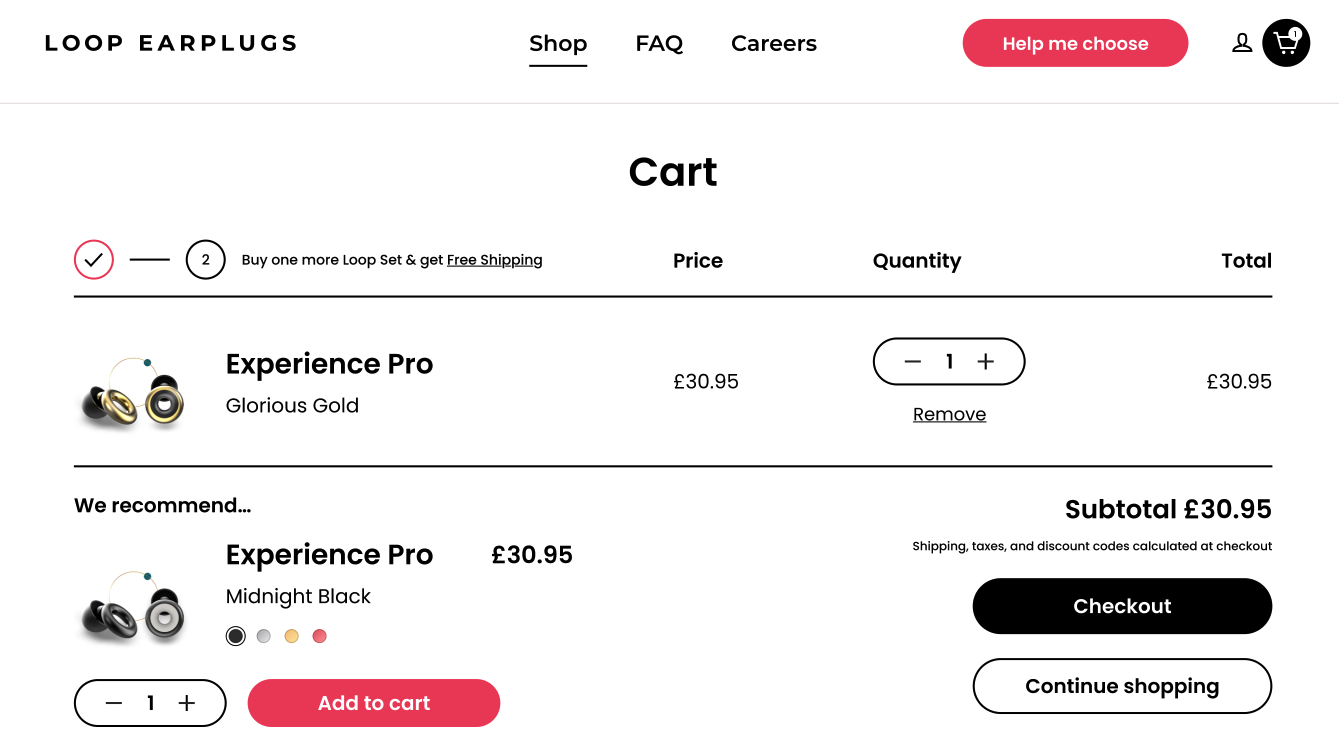
If you can’t afford to offer free shipping, why not test including the shipping price in the total price of the item? Alternatively, if free shipping isn’t feasible, ensure that throughout the entire customer journey the price is clear and transparent to the consumer.
Read more about the ecommerce CRO strategy we implemented for Loop Earplugs (spoiler: it created a €1M annual turnover growth opportunity!).
#2 Your site doesn’t offer the preferred payment method
Debit and credit card payments were once the only payment methods offered for online purchases. Today, things look a little different. Some of the biggest players in online payment right now are shopping apps like PayPal and digital wallets such as Apple Pay and Google Pay, with rising popularity for real-time instant payment options.
‘Buy now pay later’ (BNPL) options (such as Shop Pay Instalments, Klarna, AfterPay and Four) are also incredibly popular, with the global transaction value for these sorts of payments reaching $120 billion in 2021, a figure which is set to grow to $576 billion by 2026.3
Consumers want options. Not offering a range of payment methods means you risk losing a potential customer at the final hurdle in their purchase journey. In fact, 7% of customers would abandon a transaction if their preferred payment method wasn’t available.4
The trick is knowing your audience, understanding how they want to pay and making sure you offer these options on your checkout page. Displaying logos for each payment method you offer is a quick way for consumers to recognise their favourite and instil confidence before proceeding through the checkout.
Case study: DockATot
We recently saw a large decrease in cart abandonment when we added Apple Pay to the DockATot website. Our customer research told us that users of the site are typically tired and busy parents, who might be put off by having to find their card to make a payment. Having Apple Pay as an option means we can appeal directly to their need for speed and convenience.
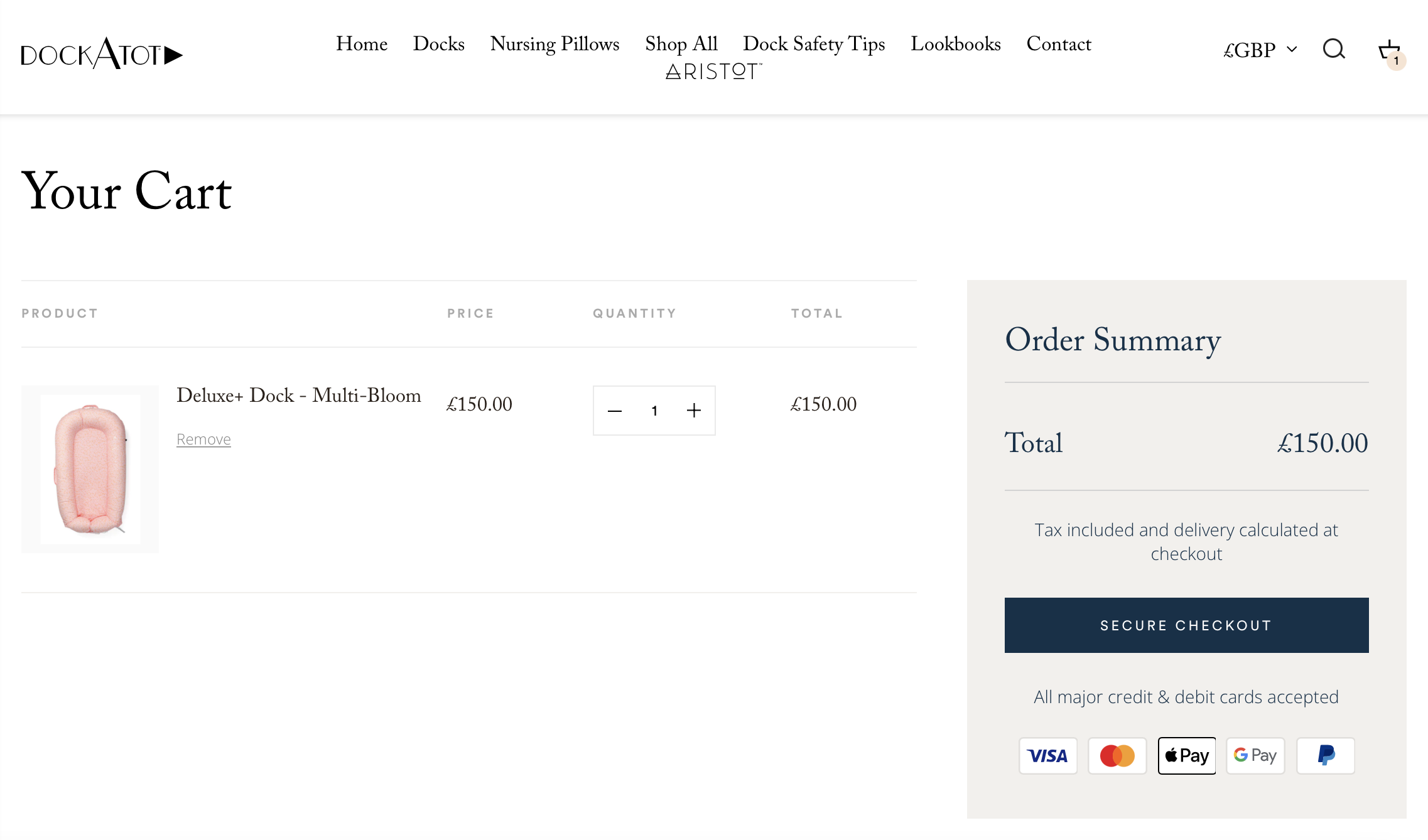
Check out our case study to find out how we helped DockATot navigate an ecommerce rebrand with our strategic digital marketing services.
#3 The checkout process is too long and complicated
Once a user has a product in their cart and hits that Checkout button, they’re looking for a payment process that’s as streamlined and efficient as possible. If it’s too long or confusing, you risk them exiting your site before they’ve finalised their purchase. Did you know that this is the reason behind 18% of cart abandonments?4
Here are a few tips to help you achieve a fast, friction-free checkout experience on your ecommerce store (and reduce cart abandonment rate on the way):
- Keep it short – we’re talking one page if possible – and simple. If your checkout process does span more than one page, try using a visible progress bar to guide customers through.
- Let customers check out as guests. According to research by Statista, 37% of users abandoned their checkout because they were forced to create an account (the second highest reason).1
- Only show customers what they really need to see at this point. Ditch any unnecessary form fields and avoid anything that could distract them from completing the checkout process or cause confusion in this final stage of their journey.
Before you start making changes to optimise your checkout, it’s vital to analyse performance at each stage of the process so you can identify exactly which areas require attention and which pain points you should address first. When you have a prioritised roadmap of ideas, you can begin A/B testing. This is essential to track what sort of impact a change is making to your cart abandonment rate.
Check out our guide to CRO basics for some top tips on how to get started with your very own ecommerce testing strategy.
Case study: YuMOVE
Currently, when YuMOVE customers add an item to their basket, they’re presented with an AJAX cart (shown in the first image) followed by a dedicated cart page (shown in the second image) before they can progress to the checkout.
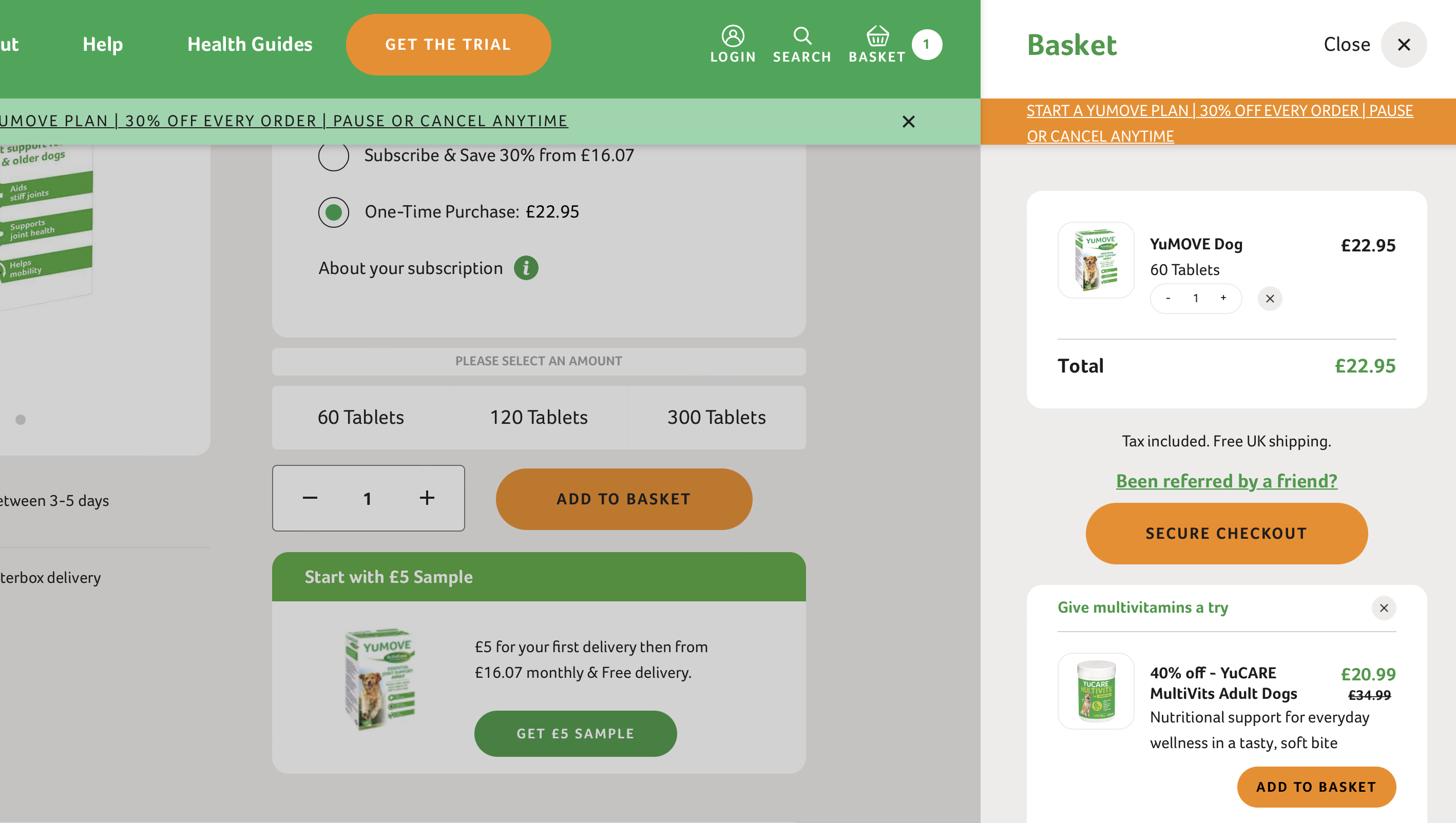
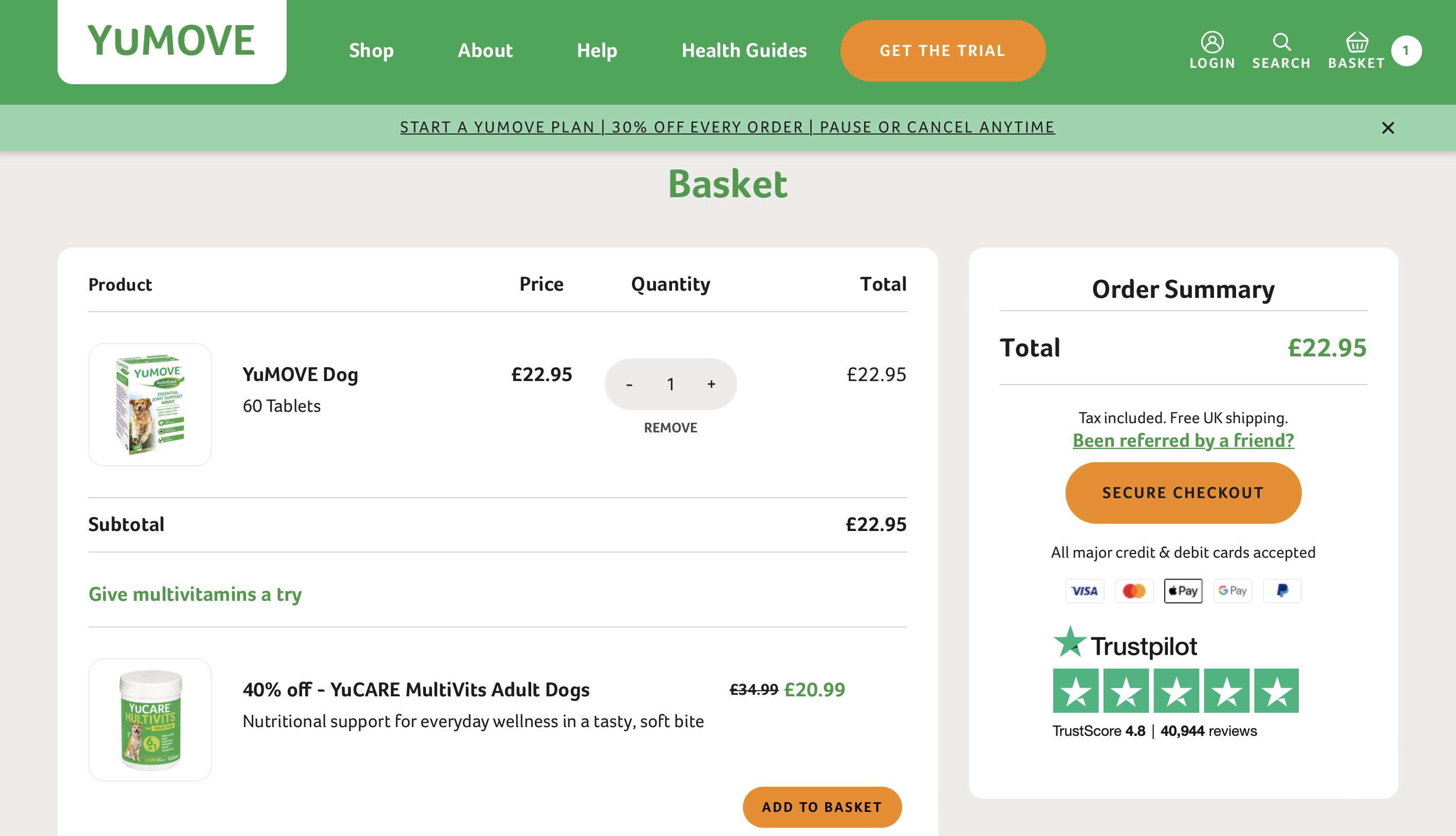
We ran an A/B test which removed this second step in the process, however this led to an increase in the drop-off rate across all segments analysed.
In this case, we hypothesised that given the large new user demographic, seeing more information in the cart before checking out was an important factor for consumers.
This example highlights the importance of A/B testing all of your hypotheses before implementing any changes in your ecommerce checkout process.
Check out some of the other A/B tests we’ve run for YuMOVE as part of a commercially-guided CRO program.
#4 Users are reminded to look for a discount code
Often in a checkout funnel, users are asked to enter any discount or promotional codes they may have. Whilst this is fine for users who have come to a site armed with a discount code to use, some will end up exiting a site to search the internet for a code. Some of these users won’t return, which spells trouble for your cart abandonment rate.
To resolve this particular challenge, it’s often wise to have a designated landing page which ranks in Google for your brand name + “discount code”. This will bring users straight back to your site with any relevant discount codes your brand is currently offering.
For example, this dedicated discount landing page is the first organic result from a Google search for “yumove discount code”:
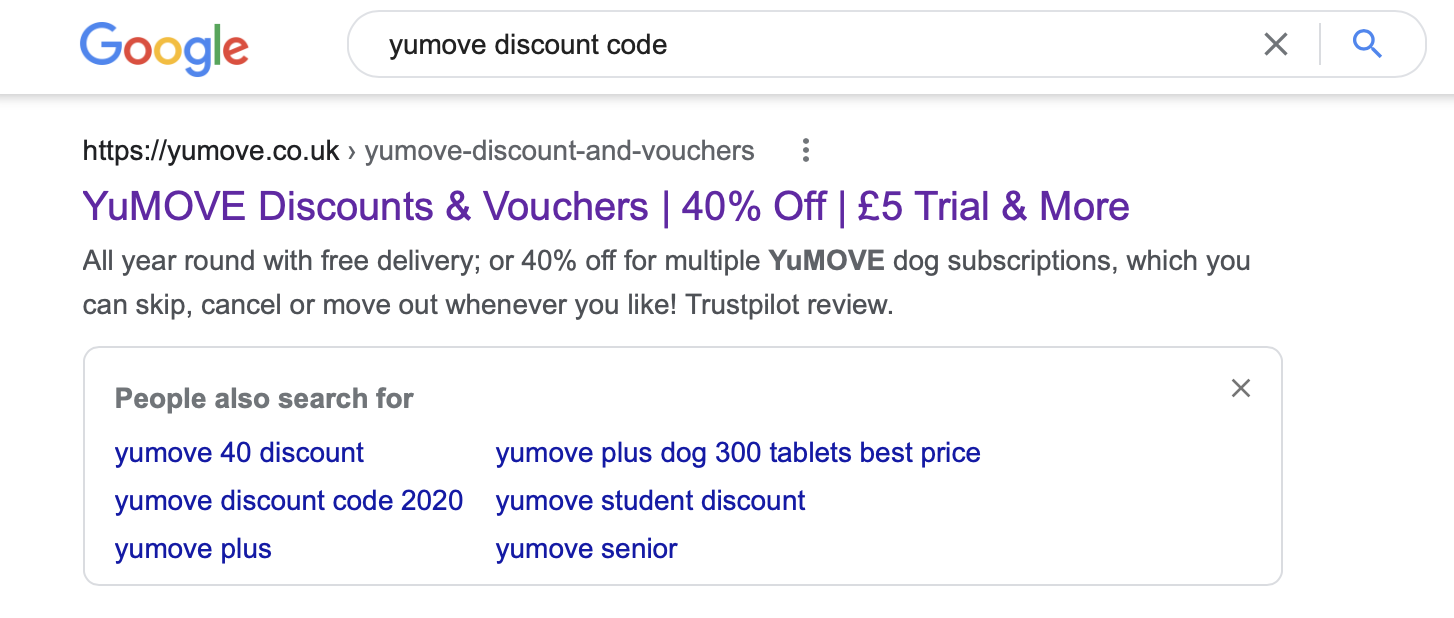
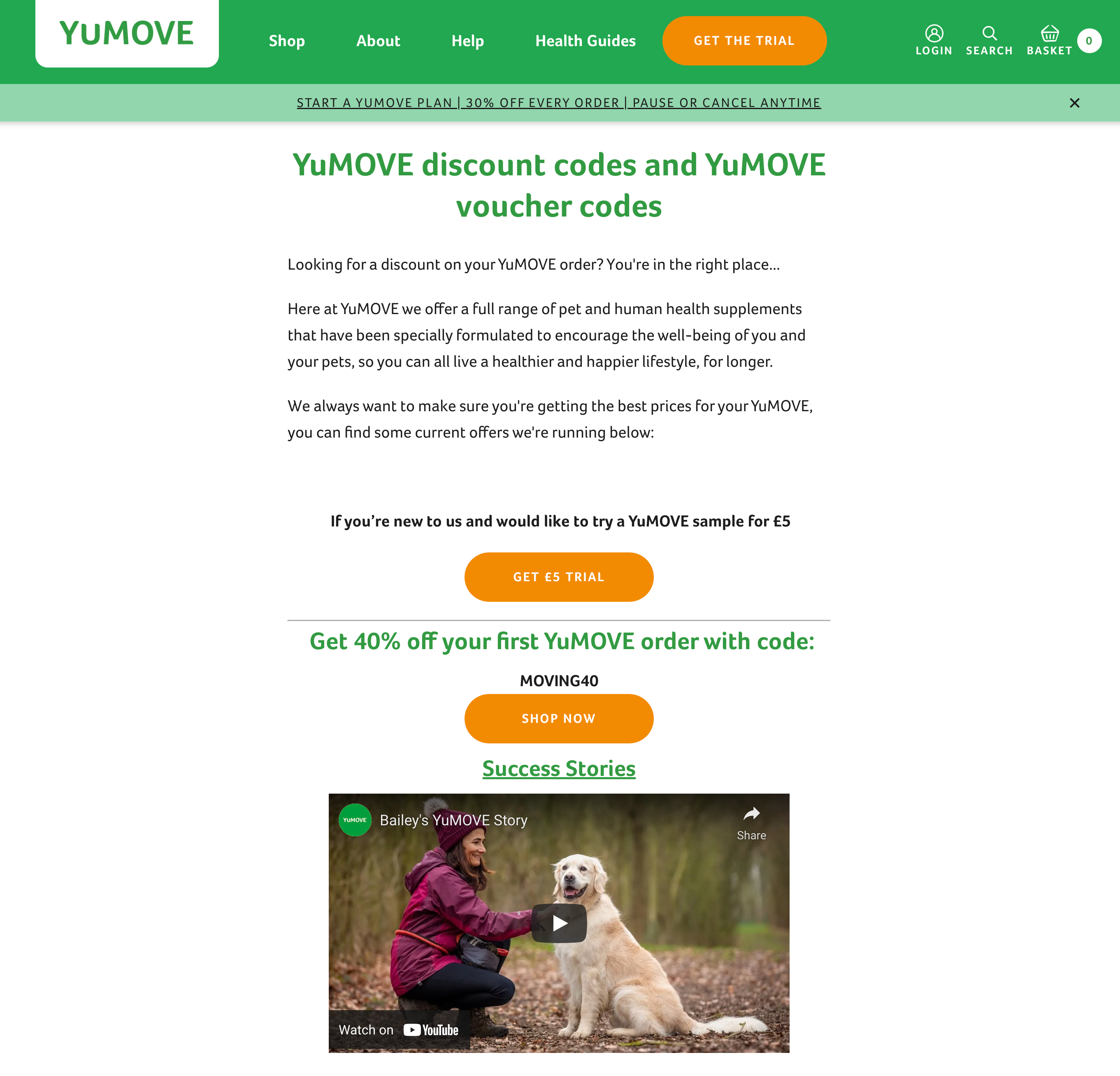
#5 Users can’t get the product when they want it
Today, speed has never been so important when it comes to ecommerce fulfilment. We’re living in an age of instant gratification where fast delivery is expected as standard. Plus, your brand is likely to be competing with other companies who can offer next-day or even same-day delivery in some postcodes.
If a user adds an item to their cart and later realises you can’t get it to them when they want it, they could head elsewhere in search of speedier shipping. In fact, 19% of people abandon their carts because of slow delivery estimates.4
Be sure to set consumers’ fulfilment expectations before they get to the cart, so they’re clear much earlier in their journey when they’ll receive their order.
Case study: Letterfest
For gifting brand Letterfest, quick delivery is vital to ensure that orders arrive for key dates. Consumers look for assurance before adding an item to their cart that their order will arrive on time.
We ran an A/B test which clearly highlighted on the product pages that the item would arrive in enough time to be gifted on Mother’s Day. This test resulted in a significant uplift in conversions and reduction of drop-off in the checkout stage, as users felt more confident that their gift would be delivered in time.
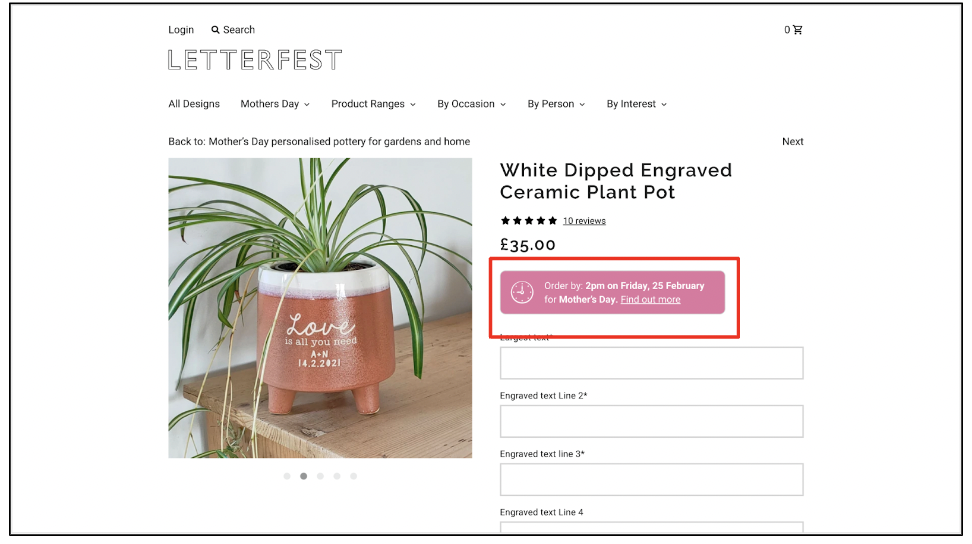
Next steps: Get testing!
Now that you have a better idea of what the most common reasons for cart abandonment are, it’s time to see if any of these are at play on your own ecommerce website.
To understand why your customers are leaving the checkout funnel, it’s important to identify:
- Who your customers are;
- What their purchase intent is;
- Why they’re visiting your website in the first place; and
- What their frictions to purchase are.
Once you’ve completed a period of insight and data analysis into your cart abandonment and identified areas for improvement, you can start prioritising some of these opportunities using our tips on A/B test prioritisation.
Of course, even with an optimised checkout flow, there’ll still be some users who abandon ship before checking out (they might get distracted or simply change their mind). Implementing an abandoned cart email flow is a great way to remind those shoppers of what’s in their cart and encourage them to “seal the deal”. Check out Relo’s guide to levelling up your Klaviyo cart abandonment flows for best practice tips, including advice from one of Swanky’s email experts, Sarah Hanney.
Your CRO specialists
As the UK’s CRO Agency of the Year (UK Digital Growth Awards 2021), we’ve got proven results when it comes to driving digital growth through ecommerce testing, personalisation and other commercially-led CRO services. Our dedicated team of CRO specialists are passionate about combining creativity and innovation with data and technology to unlock their clients’ ecommerce potential.
Contact us today to find out more!
For reference:
[1] https://www.statista.com/statistics/1254962/cart-abandonment-rate-in-the-uk/
[2] https://baymard.com/lists/cart-abandonment-rate
[3] https://www.globaldata.com/media/banking/buy-now-pay-later-global-transaction-value-reached-120-billion-2021-according-globaldata/
[4] https://www.shopify.com/blog/shopping-cart-abandonment

